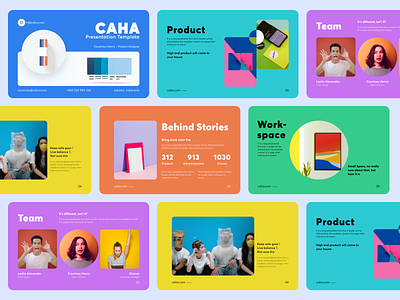E-commerce homepage design is pivotal in the ever-changing landscape of online commerce. Serving as the virtual storefront, it shapes the crucial first impression for visitors. The impact of a well-designed homepage extends beyond aesthetics; it significantly influences user experience, shapes purchasing decisions, and cultivates brand loyalty. In this blog post, we delve into the core of ecommerce homepage design, unveiling the five best tips to enhance overall aesthetics, functionality, and user engagement.

User-Centric Design
The foundation of an outstanding e-commerce homepage is a user-centric design. Understanding the target audience, their preferences, and browsing behavior is essential. The homepage should be visually appealing, easy to navigate, and intuitive. Use high-quality images, captivating headlines, and clear calls to action to guide visitors through the site.
Implementing responsive web development is crucial to ensure a seamless experience across various devices. Mobile optimization is especially critical, considering the growing number of users accessing e-commerce sites through smartphones and tablets. Prioritize a clean layout, avoiding clutter, and use whitespace strategically to enhance readability and focus.

Strategic Placement of Key Elements on Your Ecommerce Homepage Design
The strategic placement of essential elements is vital for a successful e-commerce homepage. The header should feature the logo, navigation menu, and a prominent search bar. The search bar is a powerful tool for users to find products quickly, contributing to a positive user experience.
Prominent product categories, featured products, and special promotions should be showcased below the header. Implement a visually appealing carousel or slider to highlight best-selling or newly launched products. Utilize eye-catching banners or graphics to draw attention to ongoing sales, discounts, or exclusive offers.
Additionally, strategically place trust indicators such as customer reviews, security badges, and guarantees to build credibility and instill confidence in potential buyers.
Intuitive Navigation
Efficient and intuitive navigation is a cornerstone of a successful e-commerce homepage. Implement a well-organized menu structure with clear categories and subcategories. A mega-menu can be particularly beneficial for sites with a wide range of products.
Incorporate a prominent and easily accessible search bar to enable users to find products quickly. Implement filters and sorting options to enhance the browsing experience, allowing users to refine their search based on parameters such as price, brand, or product features.
Consider integrating a breadcrumb trail to help users understand their current location within the site and easily navigate back to previous pages. Intuitive navigation not only improves user satisfaction but also encourages exploration and prolonged engagement.
Compelling Visuals and Product Presentation on your e-commerce homepage
The visual aspect of an e-commerce homepage plays a pivotal role in capturing the attention of visitors and ultimately influencing their purchasing decisions. High-quality product images serve as the virtual showroom, allowing customers to scrutinize details and gain a comprehensive understanding of what is being offered. Investing in professional photography ensures that the products are presented in the best possible light, both literally and figuratively. It establishes a sense of trust and credibility, assuring customers that they are dealing with a professional and reputable online store. Furthermore, incorporating zoom functionality for product images allows users to explore intricate details, providing a tactile experience in the virtual realm.
In addition to individual product images, lifestyle shots and videos can be powerful tools to create a narrative around the brand and its offerings. A well-executed “Featured Products” section strategically highlights select items, guiding customers towards popular or newly released products. This curated approach aids in simplifying the decision-making process for users who may be overwhelmed by a vast product catalog. Through these featured sections, businesses can not only showcase their best offerings but also tell a visual story that resonates with the target audience, fostering a deeper emotional connection and brand affinity.
Consistency is key in the realm of e-commerce visuals. Ensuring a uniform style and layout across all images contributes to a cohesive and aesthetically pleasing design. This uniformity reinforces the brand identity, making the online shopping experience more seamless and enjoyable for users. Whether through color schemes, image composition, or stylistic elements, maintaining a consistent visual language across the homepage creates a harmonious and memorable browsing experience, ultimately contributing to higher engagement and increased conversions.

Optimized Performance and Loading Speed
In the fast-paced digital era, the speed at which a website loads is integral to its success. A slow-loading e-commerce homepage not only frustrates visitors but also significantly raises bounce rates, impacting user engagement and conversion rates. To counteract this, it’s imperative to optimize the performance of your website. One effective strategy is to compress images without compromising quality, reducing file sizes and expediting load times. Additionally, leverage browser caching to store static files locally, enabling quicker access upon subsequent visits and further streamlining the user experience.
Minimizing the use of large multimedia files is another crucial step in enhancing loading speed. While rich media content can enhance engagement, an excess of heavy files can bog down the website’s performance. Striking the right balance between compelling visuals and optimized file sizes is essential. Implementing lazy loading for images is a savvy technique to prioritize the loading of visible content first, ensuring that users can interact with essential elements swiftly. This approach enhances the perception of speed, crucial in retaining user interest and preventing premature exits.
Regular performance tests are vital to identifying and addressing any bottlenecks in website speed. Conducting thorough assessments allows businesses to stay ahead of potential issues, ensuring a consistently fast and reliable browsing experience for users. By proactively monitoring and optimizing performance, e-commerce websites can mitigate the risk of high bounce rates, foster positive user experiences, and ultimately contribute to increased conversions and customer satisfaction.
Conclusion
The development of an excellent ecommerce homepage design demands a meticulous blend of user-centric principles, strategic element placement, intuitive navigation, compelling visuals, and optimized performance. By prioritizing these five tips, businesses can forge a homepage that not only attracts visitors but also converts them into satisfied customers, fostering long-term relationships and driving the success of the online store.
At Egghead Marketers, we understand the pivotal role a well-crafted homepage plays in the online shopping experience. Implementing these best practices not only enhances the visual appeal of your virtual storefront but also ensures a seamless journey for your customers from the moment they land on your homepage. By consistently refining and optimizing your e-commerce homepage, you can create a compelling gateway that reflects the essence of your brand and sets the stage for lasting customer relationships.





